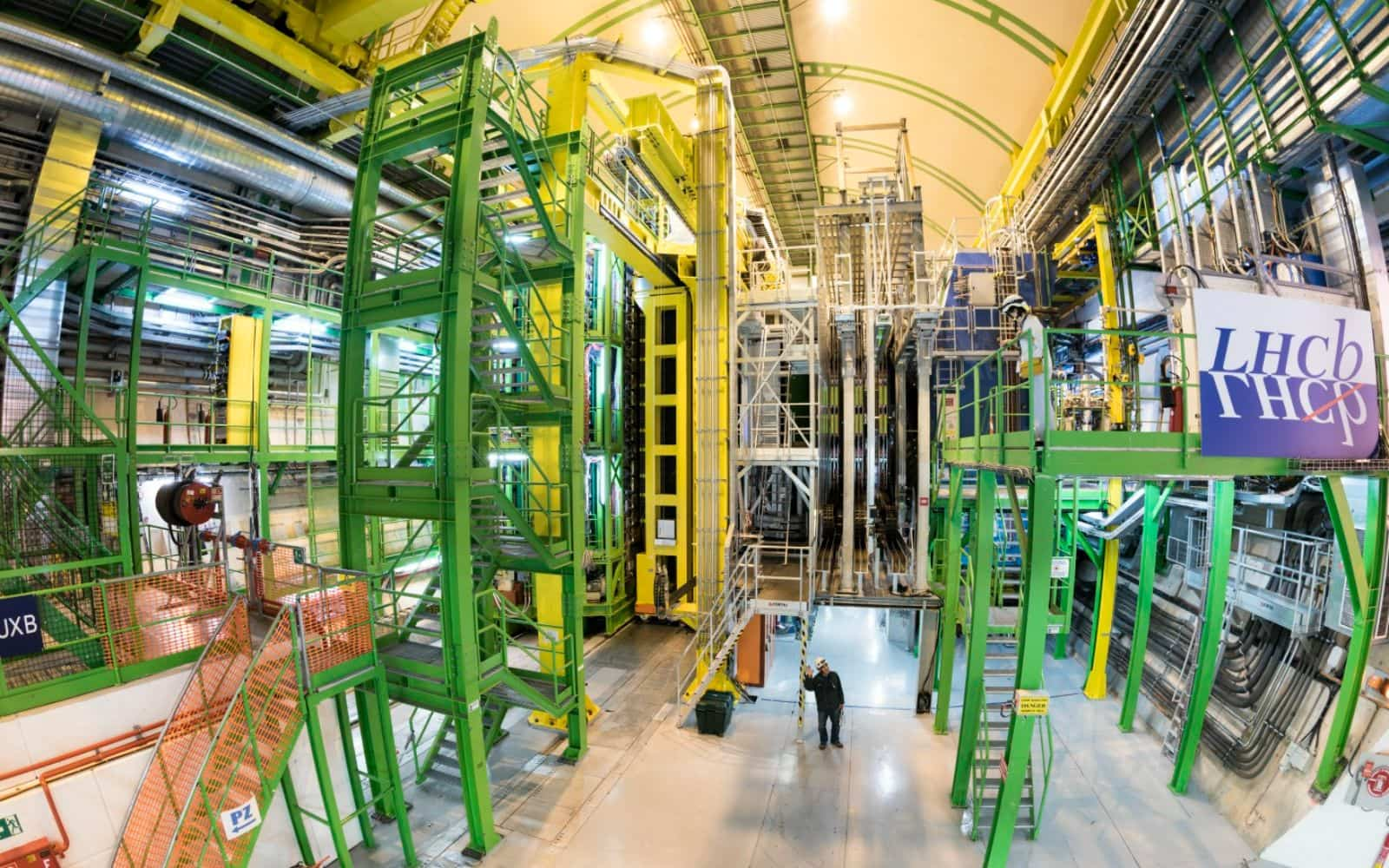Why we live in a universe made of matter instead of antimatter still remains a mystery. One of the key ingredients in finding an explanation for this asymmetry lies in the study of a particular process called CP symmetry violation. The scientific collaboration of the LHCb experiment at CERN’s Large Hadron Collider accelerator, which now numbers some 1800 scientists from all over the world, including a sizeable INFN component, presented yesterday, 24 March, during a seminar at the annual Rencontres de Moriond conference, the first observation of CP violation in baryon decays, i.e. decays involving particles composed of three quarks that make up the type of matter of which all visible universe is made. Differences in the properties of matter and antimatter resulting from CP violation had previously been observed in the decays of the K, B and D mesons, composed of a quark-antiquark pair containing respectively strange, beauty and charm quarks. But despite decades of experimental research, CP violation had never yet been observed in the decays of baryons. LHCb, studying the decays of baryon Λb0 obtained a numerical value of CP asymmetry of (2.45 ± 0.46 ± 0.10) %, which differs from zero by 5.2 standard deviations. A value greater than 5 standard deviations implies the observation of CP violation. The result is described in an article submitted to Nature and already available online on arXiv.
The phenomenon was first observed in 1964 in the decay of neutral K mesons and the two physicists who made the discovery, James Cronin and Val Fitch, were awarded the Nobel Prize in Physics in 1980. At the time, the discovery came as a disconcerting surprise to the particle physics community, which firmly believed that CP symmetry was not being violated. In the early 1970s, building on the foundations laid a few years earlier by Nicola Cabibbo in particular, Makoto Kobayashi and Toshihide Maskawa realised that CP violation could be naturally included in the theoretical framework we now know as the Standard Model of particle physics, provided that at least six different quarks existed in nature. Their fundamental idea was eventually confirmed three decades later through the observation of CP violation in particle decays with b-quarks by the collaborations of the BaBar experiments at the SLAC laboratory in the US, and Belle at the KEK laboratory in Japan, which led to Kobayashi and Maskawa being awarded the 2008 Nobel Prize in Physics.
In the Standard Model, the existence and overall value of CP violation is determined by a single parameter, although its manifestation in a particular decay is influenced by several other parameters. The values of these fundamental parameters can be determined experimentally by measuring many different CP violation processes.
“The combined set of these measurements, many of which have been performed by LHCb, agrees very well with the predictions of the Standard Model for all CP violation effects known so far in particle physics”, explains international coordinator of the LHCb experiment Vincenzo Vagnoni, researcher at the INFN Bologna Division. “But this still does not satisfy us, because our mission is to find effects of new physics beyond the Standard Model”.
The first-ever observation of CP violation in a baryonic decay now paves the way for further theoretical and experimental investigations into its nature, potentially offering new constraints for models beyond the Standard Model.






